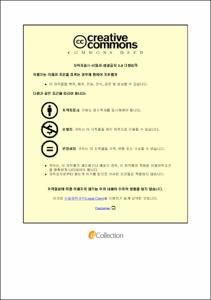평판형 히트 파이프 기반 열확산기기의 유효열전도도비 평가
- Alternative Title
- Characterization of a flat heat pipe-type heat spreader using a dimensionless effective thermal conductivity ratio
- Abstract
- In this study, heat spreading characteristics of a flat heat pipe-type heat spreader were determined in terms of a dimensionless effective thermal conductivity ratio. The effective thermal conductivity ratio was defined as a ratio of the effective thermal conductivities of the heat spreader under test and a reference material (e.g. Cu) having the same external dimensions as the heat spreader. Based on this definition, the measurement model showed that the effective thermal conductivity ratio consisted of only four temperature differences, which were precisely measurable using calibrated thermometers.
In this study, to prove effectiveness of the suggested method, we constructed a flat heat pipe-type heat spreader having dimensions of 102 mm × 102 mm × 5 mm (width × length × thickness), and investigated the effect of various influencing factors such as the heat load (heat flux), working fluid charge ratio, and internal vapor space structure using the suggested effective thermal conductivity ratio. The constructed heat spreader was injected with distilled water as the working fluid at different charge ratios from the minimum value to the maximum for stable operations. For the internal vapor space structure, heat spreaders having a reduced vapor space thickness with varying expansion angle of the flow guides were fabricated, and their heat spreading characteristics were compared.
As to effect of the working fluid charge ratio, the effective thermal conductivity ratio near the center increased with increasing charge ratio as the vapor flow space thickness was reduced with increasing charge ratio, resulting in increased vapor speed; the center region effective thermal conductivity ratio showed monotonic increase with increasing heat load due to the increased vapor mass flow rate. However, when an excess amount of the working fluid was injected, due to the accumulation of the liquid-phase working fluid near the condensing section, abrupt temperature changes were observed near outer edge of the heat spreader. In addition, due to the temperature changes along the coolant flow path, the liquid accumulation was observed to distribute asymmetrically. At 200 W, the maximum effective thermal conductivity ratio of 27.1±7.1 was measured for about 70 % charge ratio and at 2 cm radial distance from the center, which corresponded to a dimensional effective thermal conductivity of 10800 W m^(-1) K^(-1)±2800 W m^(-1) K^(-1) (at approximately 95 % level of confidence).
Regarding the effect of the internal vapor space structure, as the thickness of the vapor space was reduced, the effective thermal conductivity ratio near the center was improved due to the increased vapor speed. At 120 W, the heat spreader having 1 mm thick vapor flow space and 4° flow guide expansion angle showed an effective thermal conductivity ratio of 43.9±27.8, which corresponded to a dimensional effective thermal conductivity of 17600 W m^(-1) K^(-1)±11000 W m^(-1) K^(-1) (at approximately 95 % level of confidence). With increasing heat load, the effective thermal conductivity ratio decreased at 140 W and 160 W and then increased gradually beyond 160 W. With a flow guide expansion angle of 12°, the heat spreader showed lower effective thermal conductivity ratios at low heat loads but possessed higher values at higher heat loads than the heat spreader having 4° flow guide expansion angle. The effect of the internal vapor structure was found to be insignificant as the radial distance from the center increased.
- Issued Date
- 2022
- Awarded Date
- 2022. 2
- Type
- Dissertation
- Publisher
- 부경대학교
- Alternative Author(s)
- Han Jonghak
- Affiliation
- 부경대학교 대학원
- Department
- 대학원 스마트로봇융합응용공학과
- Advisor
- 정욱철
- Table Of Contents
- 1. 서론 1
1.1. 연구 배경 1
1.2. 연구 동향 4
1.3 연구 목표 11
2. 유효열전도도비 측정모델 13
2.1. 측정모델 13
2.2. 측정모델의 불확도 전파식 16
3. 실험장치 구성 및 실험방법 18
3.1. 실험장치 구성 18
3.2. 주요 영향인자 21
3.3 실험 방법 24
4. 실험결과 및 토의 26
4.1 천이구동 특성 26
4.2 작동유체 주입비의 영향 31
4.3 증기 유동영역 구조의 영향 43
5. 결론 53
6. 참고문헌 55
영문초록 60
- Degree
- Master
- Appears in Collections:
- 대학원 > 스마트로봇융합응용공학과
- Files in This Item:
-
-
Download
 평판형 히트 파이프 기반 열확산기기의 유효열전도도비 평가.pdf
기타 데이터 / 3.29 MB / Adobe PDF
평판형 히트 파이프 기반 열확산기기의 유효열전도도비 평가.pdf
기타 데이터 / 3.29 MB / Adobe PDF
-
Items in Repository are protected by copyright, with all rights reserved, unless otherwise indicated.